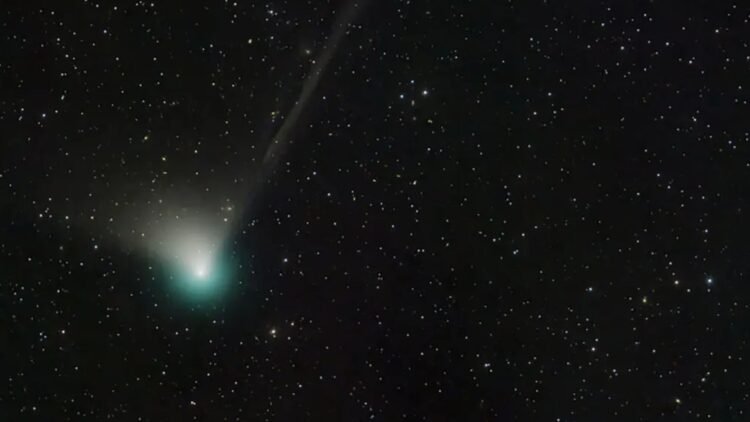The Comet C/2022 E3 (Z.T.F.) will make its closest approach on Feb. 2, coming within 26.4 million miles of Earth.
A comet with a green hue, hailing from the outer solar system, is set to make its first appearance in 50,000 years in Earth’s vicinity in the upcoming days. The comet has been gradually increasing in brightness and will make its closest approach on February 2nd, when it comes within 110 times the distance to the Moon, which is 26.4 million miles. From the Northern Hemisphere, the comet may be visible to the naked eye, however, a pair of binoculars will offer a better view. Especially during the weekend, when the new moon creates darker skies.
C/2022 E3 (Z.T.F.): The Rare Green Comet Discovered by the Zwicky Transient Facility Telescope
The comet is referred to as C/2022 E3 (Z.T.F.) as it was first discovered in March 2022 by astronomers using the Zwicky Transient Facility telescope on Palomar Mountain in California. At the time of its discovery, the comet was just inside the orbit of Jupiter and roughly 25,000 times dimmer than the faintest star visible to the naked eye. However, the Zwicky Transient Facility, with its wide field of view camera, scans the entire visible sky each night and is well-suited to discover such objects.
Exploring the Beauty of Comets: The “Dirty Snowballs” of the Solar System
Comets are clumps of dust and frozen gases, often referred to as “dirty snowballs” by astronomers. They are believed to originate from the distant, icy regions of the solar system where gravitational forces sometimes push them towards the sun. This interaction transforms them into beautiful cosmic objects. When they are close to the sun, the heat erodes their surfaces and they start emitting gases and dust, creating a glowing core known as the coma and a flame-like tail that can stretch for millions of miles.
C/2022 E3 (Z.T.F.) is glowing green because the ultraviolet radiation from the sun is absorbed by a molecule in the comet called diatomic carbon, which is two carbon atoms fused together. This reaction emits green light.
What are Comets and Why is C/2022 E3 (Z.T.F.) Green?
Comets are small, icy, and dusty celestial bodies that orbit the sun. They are believed to originate from the distant, icy regions of the solar system, such as the Kuiper Belt or the Oort Cloud. They are often referred to as “dirty snowballs” by astronomers due to their composition of dust and frozen gases.
When a comet comes closer to the sun, the heat causes the frozen gases and dust on its surface to evaporate. This forms a glowing core known as the coma, which is surrounded by a bright halo known as the corona. The solar wind pushes away the gases and dust in the coma and corona, creating a tail that can stretch for millions of miles.
Comets can appear in different colors depending on the composition of their surface and the gases they release. The green color of C/2022 E3 (Z.T.F.) is caused by the ultraviolet radiation from the sun being absorbed by a molecule in the comet called diatomic carbon, which is two carbon atoms fused together. This reaction emits green light, making this specific comet unique and attracting attention from the astronomical community.
Key Facts
- First appearance in 50,000 years
- Green color caused by absorption of ultraviolet radiation by diatomic carbon
- Closest approach to Earth on February 2nd, 110 times the distance to the Moon
- Visible to the naked eye in Northern Hemisphere, best viewed with binoculars
- Unique color, attracting attention from astronomical community
(India CSR)










